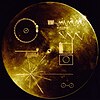K. P. H. Notoprojo

Kanjeng Pangeran Harjo Notoprojo (
On March 9, 2004, he received the Nugraha Bhakti Musik Indonesia Award.
Name
His official name changed several times, corresponding to honors received during his lifetime. He was born in Yogyakarta, Central Java, as Wasi Jolodoro. He was first called Tjokrowasito (Cokrowasito in the new orthography); and known familiarly as Pak Tjokro (Cokro). As he became musically proficient, his peers called him Ki Tjokrowasito (Ki is an unofficial title of respect). In the 1960s, the Paku Alaman Palace honored him with the name K.R.T. Wasitodipuro, or "Wasito of the palace; and the additional honorifics K.R.T., or Kanjeng Raden Tumenggung. Later, he was honored again to become K.R.T. Wasitodiningrat, "Wasito of the world." In 2001 he was recognized officially as the biological son of Paku Alam VII, and half-brother of the Paku Alam VIII. He was then given a title similar to a prince: K. P. H. Notoprojo, or Kanjeng Pangeran Haryo, which remained his name until the end of his life. [1]
Life
He was born in
In addition to playing in the court gamelan, he played with other famous gamelan groups, such as
He took over the Pura Pakualaman gamelan leadership from his father in 1962. The musical style of the Pura Pakualaman had traditional shared elements of both the Yogyakarta Sultan's palace, and, influence by intermarriage, with the Sunan's palace in Solo (Surakarta). Notoprojo, following extended residencies in Solo, furthered this process, perhaps to the point in which the style of the Pura Pakualaman could be heard as largely Solonese in character.
He composed music for the new genre of
A recording of Puspawarna by the court gamelan of
He led the gamelan at the Indonesian Pavilion of the 1964 New York World's Fair. He moved to Valencia, California in 1971 and taught at the California Institute of the Arts until 1992, in addition to work at University of California, Berkeley, San Jose State University, and many other universities in the US and Canada. In 1992 he retired and returned to Indonesia. His home is both a residence for young artists, and a site of regular performances and gatherings of some of Java's best gamelan artists.
He died in Yogyakarta on August 30, 2007, at the age of 104 in the reckoning of years in the Javanese calendar.[3] He was instrumental in spreading the appreciation and knowledge of Javanese gamelan around the world. According to Mantle Hood, "It is accepted that no other Indonesian has even approached the contributions of this man in helping the world know the great gamelan traditions of Java."[4]
Recordings
As performer/director
- Voyager spacecraft, put together by Carl Saganand others.
Compositions
- The music of K.R.T. Wasitodiningrat, performed by Gamelan Sekar Tunjung, released on CMP Records, 1994.
Writings and notation
- Javanese Vocal Notation, a collection of notation for male voices (pesindhen) for nearly 300 pieces, written in his own hand during the years he taught at California Institute of the Arts. Several of the piece are his own compositions. The collection was started by Leslie Dono Isworo, and edited by Jody Diamond with assistance from I.M. Harjito and Djoko Waluyo, with an introduction by Alex Dea and Laurie Kottmeyer. Both the slendro and pelog volumes of vocal notation, as well as a collection of his compositions, are available for download in the library of the American Gamelan Institute.[1]
Footnotes
- ^ [Personal communication.]
- ISBN 978-0345283962.
- ^ "'Hari Ini, Empu Karawitan' Berpulang di Usia 104 Tahun". Tempo Interaktif. Archived from the original on September 30, 2007. Retrieved 2007-09-06.
- ^ Hood, Ki Mantle (8 Aug 1992). "The Music of K.R.T. WASITODININGRAT". Ethnomusicology Research Digest No. 89. Archived from the original on 23 February 2005. Retrieved 2 August 2013.
References
- Sutton, R. Anderson (2001). "Wasitodiningrat [Tjokrowasito, Wasitodipuro, Wasitolodoro], Kanjeng Radèn Tumenggung [Ki]". In ISBN 978-1-56159-239-5.
Further reading
- I N. Wenten. The Creative World of Ki Wasitodipuro: the Life and Work of a Javanese Gamelan Composer (dissertation, UCLA, 1996)
- Judith O. Becker. Traditional Music in Modern Java. Honolulu: University Press of Hawaii, 1980.



